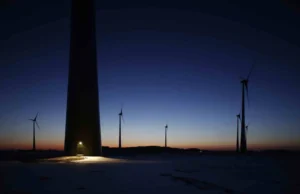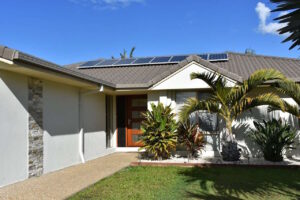Energy minister Angus Taylor has declared that Australia should keep all its existing coal generators online and ensure they are “running at full tilt” to ensure reliability in the grid.
The statement from Taylor comes in a media statement accompanying the release of the Australian Energy Update 2019, an annual statistical review that shows renewables growing to a 19 per cent of electricity production in 2018, but the country’s overall energy use still dominated by fossil fuels.
The share of renewables amounted to hydro (seven per cent), wind energy 6 per cent, and solar (5 per cent). Most of the solar remains small-scale rooftop PV, although large-scale solar was the fastest growing source of generation in 2018.
Taylor noted that this share will grow in coming years (it doesn’t take into account the huge number of projects coming on line in 2019 and 2020 to mostly meet the federal renewable energy target that Taylor had vowed to scrap).
“Australia leads the world in per-capita investment in renewable energy – at almost double the level of second placed Japan, and triple that of France and Germany,” said Taylor, who shortly after becoming minister a year ago declared there was “too much” wind and solar in the grid.
“The challenge in the energy sector is integrating the renewables boom to deliver affordable and reliable power. That means keeping our existing generation in, and running at full tilt, and supporting complementary investment in dispatchable generation and storage,” he said in the latest statement.
It is not exactly clear what Taylor – whose portfolio also includes emissions reductions – means by “running at full tilt”.
Most coal generators have been running at relatively low capacity factors, partly because of scheduled maintenance, partly because of the increasing number of sudden outages, partly due to supply shortages, and partly because they are not needed so much, particularly in the day-time when solar is creating a “duck curve” and soaking up demand.
For instance, according to ITK data, Mt Piper and Liddell power stations ran at capacity factors of just 52 per cent and 56 per cent in the last 12 months. Most others in NSW and Victoria ran at low 70s. Only Loy Yang B got close to 100 per cent after a maintenance upgrade.
The main concern of the Australian Energy Market Operator is the ability of ageing coal and gas generators to deliver – and run at full tilt – at key moments, particularly heat waves when demand soars.
Coal and gas units are becoming increasingly vulnerable to heat stress, with more than 2GW absent in Victoria earlier this year when load shedding occurred, and two key units now out of action until December, at least.
Taylor has expressed frustration about the planned closure of Liddell (one unit in 2022 and three in 2023), and has created a taskforce with the NSW government, which also seems keen to keep the unit online, even though AEMO’s estimates of new generation needed to replace it have fallen dramatically to less than 400MW.
Taylor is also looking to extend the life of the Vales Point coal power station in NSW through the delayed Underwriting New Generation Investment program, which is also looking at new gas plants and a handful of pumped hydro projects.
Despite the increase in wind and solar, the Australian Energy Update highlights just how much there is to do to transform Australia’s energy sector to renewables – not just in electricity but in transport and buildings.
Oil (much of it imported) accounted for the largest share of Australia’s primary energy mix in 2017–18, at 39 per cent, followed by coal (30 per cent) and natural gas (25 per cent).
Coal use fell by 4 per cent in 2017–18, and was 21 per cent below its peak in 2008–09, mostly due to a reduction in brown coal generation following power plant closures, with black coal consumption increasing.
It should be noted these statistics for primary energy reflect the amount of oil and coal needed to actually deliver the energy – 65 per cent of coal is lost in heat and waste, and up to 80 per cent of oil lost in heat and waste in vehicles.
 As the report notes: “if wind generation rises by 1,000 gigawatt hours, then energy consumption would rise by 3.6 petajoules, because the electricity generated is measured. If coal-fired generation rises by 1,000 gigawatt hours, then energy consumption would increase by the amount of coal consumed to generate the electricity, which would be around 10 petajoules (assuming an efficiency of 35 per cent).”
As the report notes: “if wind generation rises by 1,000 gigawatt hours, then energy consumption would rise by 3.6 petajoules, because the electricity generated is measured. If coal-fired generation rises by 1,000 gigawatt hours, then energy consumption would increase by the amount of coal consumed to generate the electricity, which would be around 10 petajoules (assuming an efficiency of 35 per cent).”
So coal may look like it is being more useful, but it’s actually just using three times as much energy (and therefore burning more fuel and producing more emissions) to deliver the same amount as wind or solar. Ditto for fuels in cars and other forms of transport.
Renewable energy sources accounted for just 6 per cent of primary energy consumption, and just 2.6 per cent of primary energy production (taking into account exported gas and coal).
This figure is unlikely to change much in the future without a significant increase in renewable energy generation, more reflective statistics on delivered energy, and a focus on electrification of transport and buildings.
 So far the ACT – with its 100% renewable electricity target already in the bag – is the only state or territory announcing plans to go forward with this.
So far the ACT – with its 100% renewable electricity target already in the bag – is the only state or territory announcing plans to go forward with this.
This graph shows total electricity use by state in 2018. Tasmania operated at 95 per cent renewables, while South Australia reached 51 per cent – all from wind (just over 40 per cent), and solar (10 per cent).
Note: We asked Taylor’s office to clarify what exactly was meant by “full tilt” but we did not hear back.










